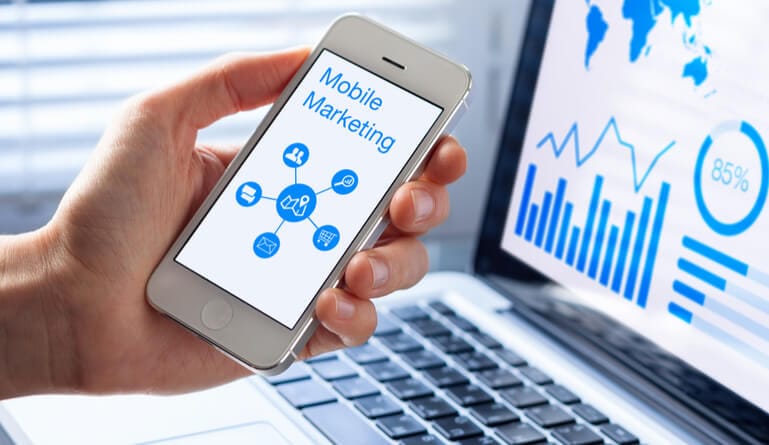Marketing is intrinsically tied to sales, which is tied to profit. Better brand awareness means better potential for sales which grows revenue and profit. That means when you start strategizing about how to grow your profit, you start with marketing. Marketing is the foundation for awareness and recognition.
Better profits can be particularly important to cash-sensitive small businesses. Luckily, there are some affordable and business-growing marketing strategies for small businesses. It’s particularly important to focus effort on mobile marketing, as most people own smartphones and are using them throughout the entire course of their day. If you want to make sure your message gets in front of your target audience, mobile is always a smart bet and a necessary step for maximum impact.
Tips to Get Profit From Mobile Marketing for Small Businesses
Here are all the places to make sure you focus on when developing your mobile marketing for small businesses.
1. Mobile-optimized site
Your mobile ads are going to drive traffic somewhere and it should be a mobile-optimized site. Before you even consider what kind of assets you need to create engagement, you want to make sure you have a site that’s set up for the best possible customer experience. Customers who don’t have a good mobile experience will be turned off by your brand. What counts as “mobile-friendly”? Quick load time and content that fits on a screen without having to scroll side to side or zoom in are some of the most important features.
2. Email campaign
Email definitely counts as mobile marketing. According to Fundera, 75% of smartphone users check their email most from the mobile device. That means that you need to put time and effort into making sure your emails render well on all kinds of mobile devices with varying screen sizes. Many marketing and email automation programs have a built-in mobile responsible design for email, as well as other tools that can help create more impactful emails, like A/B testing and drag and drop design so you can easily create emails even without coding experience.
3. SMS and text marketing
Some businesses tend to overlook SMS as a viable marketing tool – since there’s no design or other graphic elements (with the exception of the occasional emoji), there is often the belief that they’re not valuable as a form of customer outreach. The truth is that they can be high-impact – SMS services are affordable for most businesses, the short nature of the form forces businesses to be succinct and direct, and over 98% of people open their texts, usually within just minutes of getting them. This might be a more challenging form of marketing, but it’s a direct-to-mobile approach that has a lot of potentials.
4. Social media marketing
When it comes to creating successful mobile marketing for small businesses, social media can’t be overlooked. Most social media usage transpires through a mobile device, often through a native app, and according to Oberlo, users spend an average of 2 hours and 22 minutes per day on social networks. In your social media strategy, it’s important to consider more than just ads. While social media provides an excellent opportunity to target your message to the audience segment most likely to connect with or find relevance in your product or service and is of course still valuable, more brand is finding success with influencer marketing. This can be useful for small businesses who want to get early adoption in their product or service. Piggybacking off of someone else’s social following and exposing your brand to that audience through an influence review, testimonial, or other feature is likely to secure audience trust and buy-in and create a positive social media experience.
5. Native mobile apps
Not all small businesses will get an ROI from developing a mobile app, but technology is making it more feasible for some, so it’s certainly something to consider. Even if your app-only offers simple features like the ability to order ahead or schedule appointments in the app, it can create a more streamlined simplified experience for customers which can grow customer loyalty and help to drive profits. Native apps also offer the possibility of notifications that can create an alert on the user’s mobile homes screen even if they don’t have the app open. One thing to make sure you remember when developing your mobile app is to invest the time, energy, and research into optimizing your mobile store listing and description so it can be easily found by customers.
Mobile marketing for small businesses is an important thing to get right. While there is no magic formula for mobile marketing for small businesses, creating your strategy should take each part of the mobile experience into account at some point. No matter how small your business, you can build a mobile marketing strategy that gets big results.





